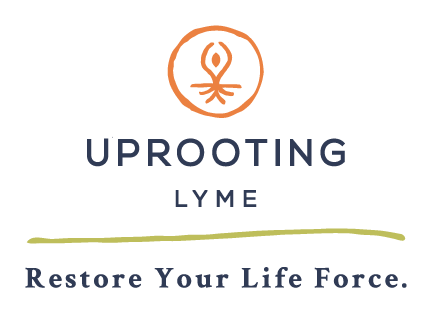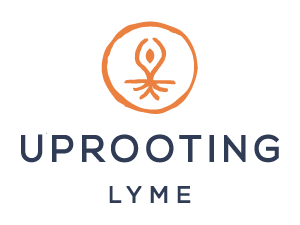
How To Detox Wildfire Smoke
Our hearts and prayers go out to those presently affected by the LA fires.
Wildfires are occurring more often and with greater scope and intensity. The smoke from these wildfires travels far and wide, often affecting communities in other parts of the globe. Patients often ask me how they can protect and detoxify their bodies from the air pollution that results from wildfires. Here I will share my top recommendations regarding how to detoxify your body following exposure to wildfire smoke. This advice can apply to other types of toxic smoke exposure as well, and is similar to what works best for other forms of lung inflammation, such as that caused by Covid.

Because of the very small particle size, wildfire smoke is understood to be particularly dangerous to the body because the toxins can more easily become embedded in deep layers of organ tissue, such as the lungs, and lead to tissue damage and disease over time. These toxins may cause irritation and inflammation in the body, aggravating health conditions such as lung or heart disease, allergies, auto-immune conditions, and more. Any chronic inflammatory condition can be significantly worsened by smoke exposure. Toxic smoke inhalation can increase pain levels, worsen lung and heart conditions, aggravate circulatory and neurological disorders, and exacerbate cognitive, mental and emotional symptoms.
Even for those of us with no underlying illness, clearing these toxins from the body is important for keeping the body’s burden as low as possible (supporting vitality and a disease-free life).
THE BASICS
- If your health is at risk, if possible, leave the area until the air is cleaner.
- Stay indoors as much as possible.
- Wear an N95 mask if you need to be outdoors.
- Get a HEPA filter for your home, and make sure existing air cleaners have new filters so they are working optimally.
DETOXIFICATION BEST PRACTICES
The principles of whole-body detoxification provide a foundational cure for any toxin exposure. In brief, these consist of:
- Hydration – Drink plenty of clean (ideally spring) water, at least 32-40 oz. / day. To aid cellular hydration further, add a slice of lemon or dissolve a ¼ teaspoon of Himalayan or celtic sea salt into 12-16 oz. of water and drink that daily. Dehydration is one of the greatest underlying causes of escalated inflammation and symptoms due to toxin exposure.
- Alkalinity – Juice and eat as many dark green and other vegetables and fruits that are highly alkaline, such as cucumbers, celery, lemon and all leafy greens. Add in other fruits and vegetable that you like to make it tasty. Because toxins are highly acidic, consuming foods that increase alkalinity helps to move toxins out of the body more rapidly.
- Colon cleansing – Be sure you are moving your bowels so that plenty of physical waste matter is exiting the body. If this is not happening daily for you, utilize a colon cleansing tool such as at home enemas, colon hydrotherapy, or a gentle herbal laxative.
- Sweating – If you have access to a sauna or bathtub, make use of these essential tools for pushing toxins out through the skin. One cup each of Epsom salts and baking soda added to the bathtub helps to draw toxins out through the skin.

To learn more about the benefits of this simple, at-home detox approach, check out Top 10 Reasons Why Detox Heals.
Now for more focused detox advice for toxic smoke inhalation. The most common symptoms and side-effects are addressed with specific remedies and self-care advice below. These work best when at least some of the global cleansing practices are being utilized as well.
The sooner these supportive remedies and practices are put into place, the better the prognosis and outcome.
Vitamins for Wildfire Smoke Detox:
- Vitamin C, especially liposomal Vitamin C or IV Vitamin C if available. ASAP, take 3,000 mg of the highest quality Vitamin C you can access. Liposomal or IV delivery methods are likely to have stronger effects.
- Liposomal glutathione – this can be taken orally and is an important antioxidant for the lungs and liver; or even better, if you can obtain a prescription for glutathione to be used with a nebulizer from a healthcare provider.
Herbal Medicine for Wildfire Smoke Detox:
Lung Detox & Inflammation
- My Plasma Essential Oil Remedy – Originally formulated for chronic lung infection, this formula is also effective to help clear inhaled toxins from the lungs, reduce lung inflammation, and helps to open the airways. This is best for people with pre-existing lung or inflammatory conditions who need the strongest option available.
- Clear Toxin & Restore Harmony – This Chinese herbal formula has many applications, from infection (a favorite for the flu, Covid and bacterial infection), as well as clearing toxic heat from the lungs and respiratory system. Available as a brew tea or granules. This is your best choice for fast-acting relief from smoke and toxin exposure that is leading to cough, breathing difficulty, general fatigue and stagnation.
- Elecampane tincture – Elecampane (Inula helenium) has been used in traditional medicine for centuries, particularly for respiratory issues like cough, bronchitis, and asthma. It has expectorant properties, which can help to clear the lungs of mucus and phlegm. This is best for mild to moderate symptoms, is gentle, and a good add-on to aid clearing phlegm in conjunction with the other remedies.
- Astragalus Immune Shine – Best for immune support and to aid the body’s ability to stress as an adaptogenic and immune enhancing herbal blend. Available as a brew tea, granule poweder, or tincture.
Eye Burning
- Rinse eyes with saline
- Make honey eye drops with raw honey (mix a ½ tsp with warm water, then apply into the eye with a dropper to soothe irritation and dryness.
Nasal Congestion
- Nasal rinsing with a neti pot.
- Old Faithful Nasal Spray – A powerful essential oil based sinus decongestant. Can be used for sinus congestion or to prevent or treat infection.
If you are affected by the fire, please take 25% off any Bloom & Reveal Botanicals products by using code WILDFIRE25 at checkout, and let us know how else we can support you!
Sources:
- Effect of the Use of Intranasal Spray of Essential Oils in Patients with Perennial Allergic Rhinitis: A Prospective Study. Int Arch Allergy Immunol. 2021;182(3):182-189. doi: 10.1159/000510592. Epub 2020 Sep 22. PMID: 32961531; PMCID: PMC7949223. https://pmc.ncbi.nlm.nih.gov/articles/PMC7949223/
- Kenny CR, Stojakowska A, Furey A, Lucey B. From Monographs to Chromatograms: The Antimicrobial Potential of Inula helenium L. (Elecampane) Naturalised in Ireland. Molecules. 2022 Feb 18;27(4):1406. doi: 10.3390/molecules27041406. PMID: 35209195; PMCID: PMC8874828. https://pmc.ncbi.nlm.nih.gov/articles/PMC8874828/
- McKay DL, Blumberg JB. A review of the bioactivity and potential health benefits of peppermint tea (Mentha piperita L.). Phytother Res. 2006 Aug;20(8):619-33. doi: 10.1002/ptr.1936. PMID: 16767798.
- Nabissi M, Marinelli O, Morelli MB, Nicotra G, Iannarelli R, Amantini C, Santoni G, Maggi F. Thyme extract increases mucociliary-beating frequency in primary cell lines from chronic obstructive pulmonary disease patients. Biomed Pharmacother. 2018 Sep;105:1248-1253. doi: 10.1016/j.biopha.2018.06.004. Epub 2018 Jun 22. PMID: 30021361.






